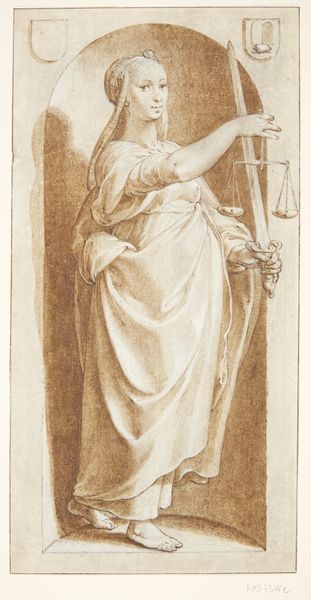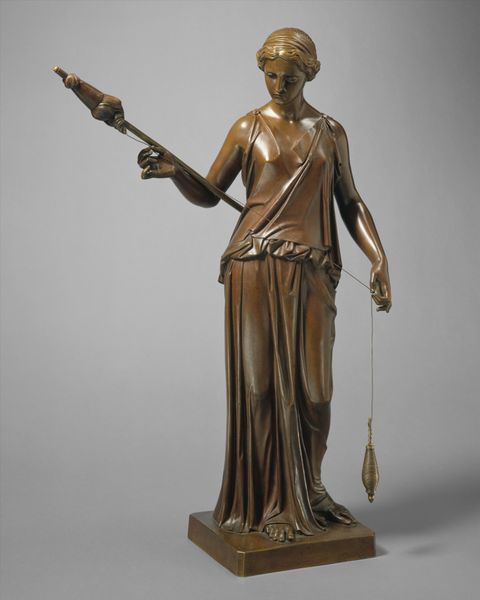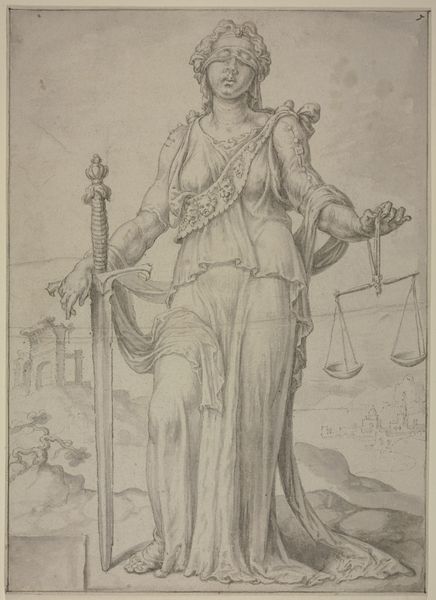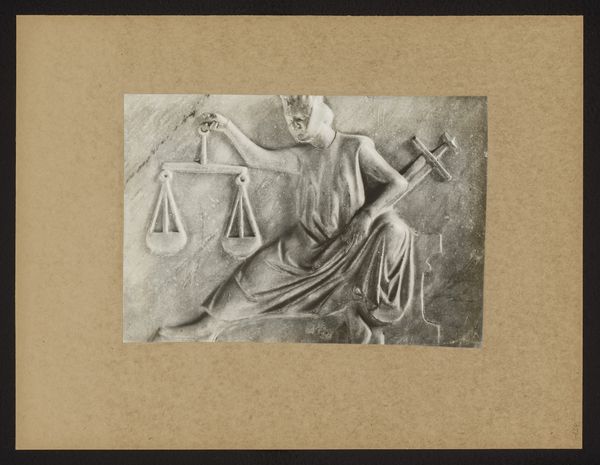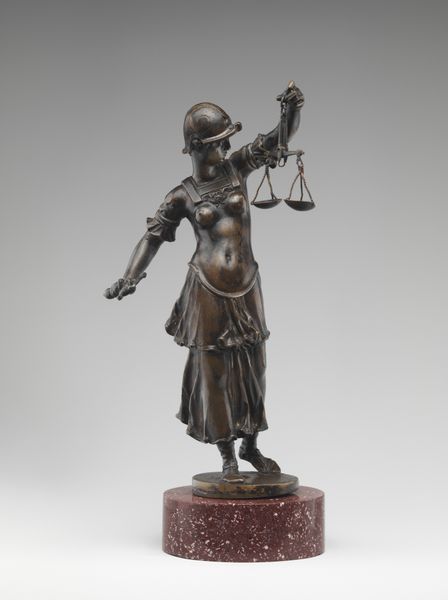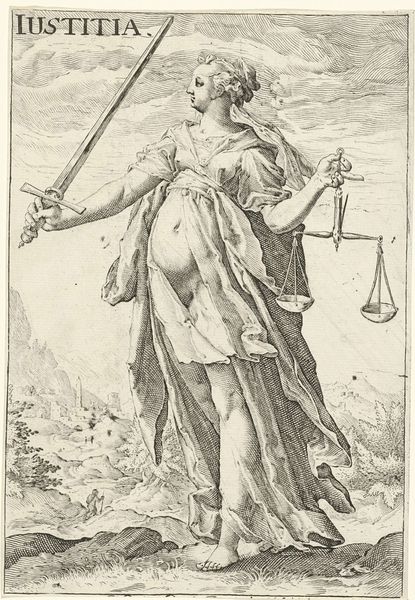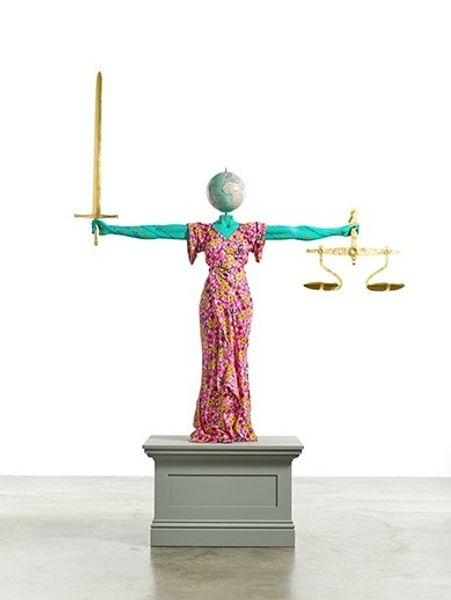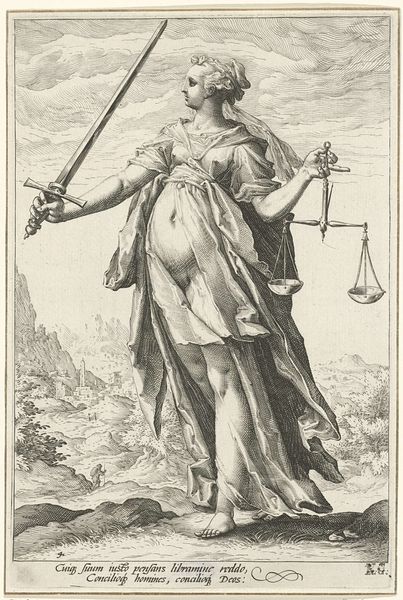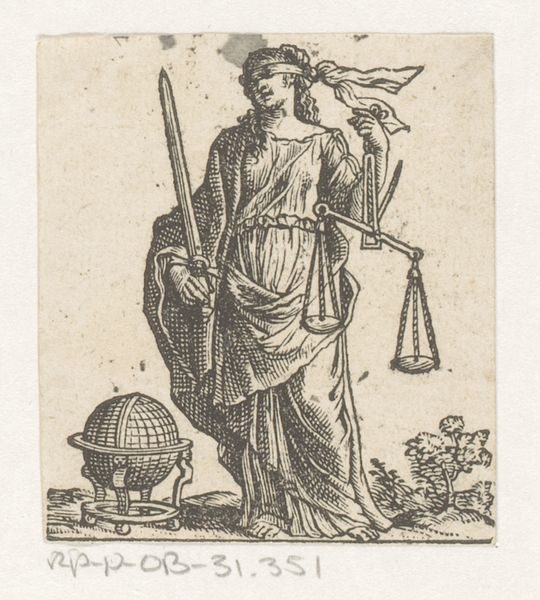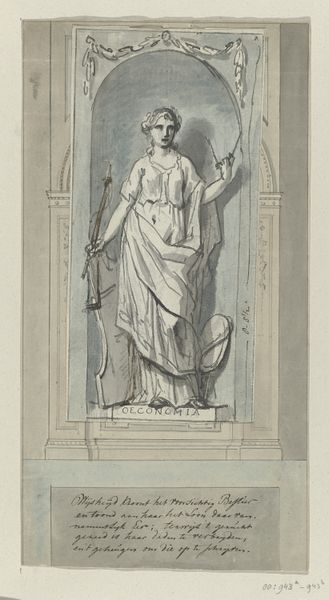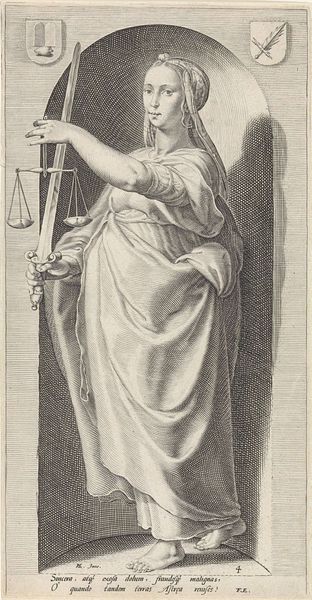
drawing
#
drawing
#
pencil sketch
#
charcoal drawing
#
charcoal art
#
portrait reference
#
pencil drawing
#
portrait head and shoulder
#
underpainting
#
animal drawing portrait
#
portrait drawing
#
digital portrait
Dimensions: overall: 53.2 x 37.6 cm (20 15/16 x 14 13/16 in.)
Copyright: National Gallery of Art: CC0 1.0
Editor: Here we have "Figure of Justice," a drawing from around 1937 by Elizabeth Moutal. There's something very imposing about it, the way the figure fills the frame. I’m curious, what stands out to you in this piece? Curator: For me, this work immediately sparks a connection to the socio-political context of its creation. Consider the late 1930s. As global tensions escalated, the symbol of Justice—blindfolded, impartial, and armed—took on powerful, often propagandistic, significance. Does Moutal’s depiction reinforce or subvert this prevalent image, and for whom? Editor: So you’re saying the image of Justice was already loaded with meaning at the time? Curator: Absolutely. Think about who commissioned or viewed works like these. Was this meant to inspire confidence in existing power structures? Or perhaps to critique them subtly? Also, how does the choice of a drawing, rather than a grand sculpture or painting, impact its message and accessibility? Was the relative inexpensiveness or immediacy of the drawing medium a deliberate decision, and what was its function at that time? Editor: I hadn't considered the choice of medium like that. The drawing itself feels almost classical, echoing ancient statues. Curator: Precisely. By evoking that classical imagery, Moutal connects the ideal of Justice to a longer historical tradition. The questions then become, who is this Justice for? And how has the answer changed over time, particularly as we approach and enter the conflagration of WWII? The blank background certainly reinforces that reading for me, there are no markers to provide specific local or geographic context. Editor: It's interesting to think about the layers of meaning embedded in such a familiar image. Curator: Indeed. By examining its historical context and production, we see how "Figure of Justice" can tell a complex story about power, representation, and social anxieties. Editor: This gives me a lot to consider regarding how context informs our viewing of this work, thank you.
Comments
No comments
Be the first to comment and join the conversation on the ultimate creative platform.

